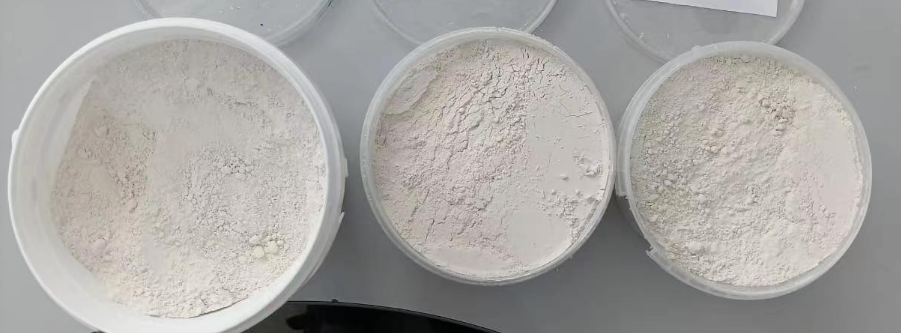Glass Microspheres
What are Glass Microspheres?
Glass microspheres stand out due to their lightweight nature and chemical stability. They serve as valuable functional additives, playing a pivotal role in enhancing buoyancy and reducing weight or density. Being composed of soda-lime or borosilicate glass, these microscopic spheres remain unaffected by water and maintain chemical stability, all while offering an impressive strength-to-weight ratio. Their construction involves either repurposing scrap plate glass, bottle glass, or a concoction of components like sand and soda ash.
What are Glass Microspheres Made of?
As mentioned above, Glass Bubble are primarily crafted from soda-lime glass, a choice rooted in the glass type’s advantageous properties such as its relatively low melting point and exceptional chemical inertness. This unique composition allows soda-lime glass to be melted down at temperatures that are manageable for production processes while ensuring that the resulting microspheres exhibit high levels of stability when exposed to various chemical environments.
Glass Bubble fabrication isn’t confined solely to soda-lime glass. These tiny spheres can be synthesized from a diverse range of raw materials. Polymers provide flexibility in terms of material properties. Cellulose-based microspheres are biodegradable that makes them attractive for environmentally conscious applications.
Silica and metal-based microspheres offer specialized properties such as high temperature resistance and electrical conductivity, respectively, expanding the utility of microspheres into domains like thermal insulation or electronics.
What are Glass Microspheres Used For?
Glass microspheres are widely used in a lot of industry. It has significant importance in industry formulations because of its characteristics. Here are just few of its applications.
Surface Preparation
Glass microspheres act as efficient abrasives in processes like sandblasting and shot peening. When propelled against a surface, these microspheres create a gentle yet effective abrasion, removing contaminants, rust, coatings, or unwanted materials without causing damage to the underlying substrate. This prepares the surface for subsequent treatments such as painting, coating, or bonding. The uniform size and spherical shape of Glass Bubble ensure consistent results and a controlled level of abrasion, making them a reliable choice for achieving the desired surface conditions.
Achieving Satin and Matt Finish
In applications where a textured or non-glossy surface is desired, glass microspheres are incorporated into coatings, paints, or finishes. When these formulations are applied to surfaces and allowed to dry, the embedded glass microspheres rise to the surface, creating a textured effect. The microspheres help scatter light, reducing gloss and creating a soft, subdued appearance. The controlled addition of glass microspheres offers manufacturers the ability to tailor the level of matte effect according to their design preferences.
Helps Clean Stainless Steel and Weld.
Glass microspheres serve as effective agents for cleaning stainless steel surfaces and welds, as well as for scale removal in various industrial processes. In applications where maintaining the integrity and cleanliness of stainless steel is crucial, glass microspheres are employed in blasting techniques. When propelled against stainless steel surfaces or welds, these microspheres create a gentle abrasive action that efficiently removes contaminants, rust, and scale without causing damage to the stainless steel itself.
Dry and Wet Aluminum Blasting.
In dry blasting, glass microspheres are propelled against a surface using compressed air, creating an abrasive action that effectively removes contaminants, coatings, and imperfections. Glass Bubble find application in wet blasting as well, where they are mixed with a liquid to create a slurry that is then sprayed onto the surface.
When it comes to aluminum parts, wet blasting with Glass Bubble ensures thorough cleaning without causing any damage or warping. This is of particular significance in industries where aluminum components require thorough cleaning while maintaining their dimensional accuracy.
Reconditioning and Cleaning of Parts.
Their application in abrasive blasting processes as mentioned above, helps restore worn or contaminated surfaces to their original condition, extending the lifespan of components and minimizing the need for replacements. Through controlled abrasion, glass microspheres gently remove layers of rust, paint, coatings, and accumulated debris from surfaces without causing damage, thereby reconditioning parts to optimal functionality.
Helps to Clean Mold and Die Parts.
The intricate cavities and surfaces of molds and dies of machineries can accumulate residues, contaminants, and deposits over time, compromising the quality and precision of the products they produce. Glass Bubble are adept at addressing this challenge. When used in blasting processes, these microspheres gently yet effectively dislodge and remove unwanted materials from the complex geometries of molds and dies.
Defect Correction and Pre-Treatment
In applications where surface imperfections, inconsistencies, or defects are present, glass microspheres are employed as fillers in compounds or coatings. When these materials are applied to the surface, the microspheres help fill in gaps, smooth out irregularities, and correct defects, creating a more uniform and flawless substrate.
Glass microspheres are also used in the pretreatment of parts, particularly before processes such as painting, plating, or bonding. The addition of microspheres to coatings or primers enhances the adhesion of these materials to the surface, creating a strong bond that resists peeling or detachment.
Helps to Clean Heat treated, Electroeroded, or Polished Parts.
High temperatures might lead to oxidation or scale buildup, glass microspheres can be used in blasting processes to remove these layers without compromising the structural integrity of the parts. Similarly, for parts subjected to electroerosion, where material is removed through controlled electrical discharges, glass microspheres can aid in the removal of remaining debris and ensure a clean surface for subsequent processes. Additionally, glass microspheres are employed to enhance the surface finish of polished parts.
Surface Tension Mitigation and Improved Shot Peening.
Due to their spherical shape and consistent size, these microspheres help disperse stresses and reduce surface tension during curing or drying processes. This aids in preventing defects such as cracking, warping, or curling, ensuring that the surface remains smooth and free from imperfections.
Shot peening is a process designed to enhance the fatigue life and strength of materials. During shot peening, these microspheres are propelled onto the surface of a material through controlled impact. The impact creates compressive stresses on the surface, effectively improving the material’s resistance to fatigue and stress-related failures.
Utility in Restoration and Woodwork.
Glass microspheres are integrated into specialized fillers, adhesives, and compounds used to repair and restore damaged or deteriorated wood surfaces. When applied, the microspheres help fill gaps, cracks, and voids in wood.
Glass microspheres are also utilized in wood finishes and coatings. Incorporating microspheres into varnishes, paints, or sealants imparts unique properties to the final product. The microspheres can create textural effects or enhance certain aspects of the finish, contributing to the visual and tactile qualities of the wood surface.
Blasting in General, does not contain silica.
Glass microspheres offer a distinct advantage in blasting applications, particularly in scenarios where avoiding silica is crucial. Silica can pose health risks when inhaled as fine particles. Glass microspheres provide an effective alternative as they do not contain silica and are thus a safer option for both operators and the environment. When used in blasting processes, these microspheres can achieve similar results to traditional abrasive materials without the associated health hazards.
Why Do You Need Glass Microspheres?
When you are looking for an additive that still maintain structural integrity, glass microspheres are very useful. Other than that, it also has a lot of other great characteristics that makes it useful as an additive in many industries.
Improved Surface Finish
Glass microspheres use as additives in coatings, paints, and finishes helps create surfaces that are smoother, more uniform, and visually appealing. The spherical shape and consistent size of glass microspheres allow them to fill in gaps, voids, and imperfections, resulting in a more even surface texture. Glass microspheres help scatter light, reducing gloss and glare. This matte effect can be especially valuable in environments where light reflection could impede visibility or where a subdued appearance is needed.
Thermal Insulation
Due to their hollow nature, these microspheres provide a layer of trapped air within their spherical structure. Air is a poor conductor of heat, which means that incorporating glass microspheres into materials, such as plastics or coatings, can significantly improve their thermal insulating properties.
When added to materials, glass microspheres can create a lightweight yet effective thermal barrier that reduces heat transfer. This can lead to improved energy efficiency, reduced heat loss, and better temperature control. For example, in building materials, the use of glass microspheres can help create structures that are better insulated, reducing the need for excessive heating or cooling and ultimately contributing to energy conservation.
Lightweight Filler
The utilization of glass microspheres as lightweight fillers addresses the need for materials with reduced density and enhanced buoyancy in various applications. Due to their hollow structure and inherent low density, glass microspheres contribute to the overall reduction of a material’s weight while maintaining or even improving its mechanical properties.
Density Control
The incorporation of glass microspheres into materials allows manufacturers to achieve precise density adjustments, whether the goal is to increase or decrease the overall mass of the product. The use of glass microspheres enables manufacturer to create structures that are both strong and manageable in weight.
Improved Dimensional Stability
The incorporation of glass microspheres into materials such as plastics or composites helps mitigate issues related to dimensional changes caused by factors like temperature fluctuations or moisture absorption. When glass microspheres are dispersed within the material matrix, the microspheres counteract the effects of expansion or contraction.
Processing Benefits
Glass microspheres contribute to improved flow and uniformity in various materials during processing. When mixed into liquids or viscous materials, they assist in achieving a more consistent distribution, which leads to reduced settling and segregation issues. This results in a higher-quality end product with improved mechanical properties, surface finish, and overall performance.


